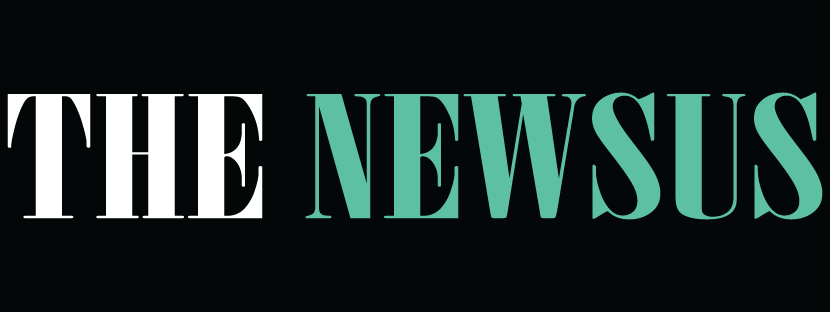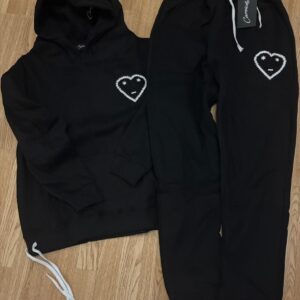How Online Stores Are Making Modest Fashion More Accessible
Modest fashion — styles that prioritize coverage, comfort, or a specific cultural or religious code of dress — has moved...
Modest fashion — styles that prioritize coverage, comfort, or a specific cultural or religious code of dress — has moved from the margins of the apparel industry into mainstream attention over the past decade. Much of that shift is powered by the internet: online stores, marketplaces, and social commerce tools have lowered barriers that once made modest dressing expensive, regionally isolated, or invisible in mainstream catalogs. This article unpacks how online retail is transforming modest fashion into something more accessible — for shoppers, for designers, and for whole communities — and what that means for the future of style.
From scarcity to abundance: the inventory revolution
One of the most basic ways online stores increase accessibility is through sheer selection. Brick-and-mortar shops in many places could only stock a handful of modest-friendly pieces because of limited shelf space and uncertain local demand. E-commerce removes that constraint. Online sellers can list dozens or hundreds of variations — different lengths, sleeve styles, necklines, colors and fabrics — without needing extra physical space.
Marketplaces and multi-vendor platforms amplify this effect by aggregating independent designers, small labels, and international suppliers in one place. Shoppers who once had to search multiple neighborhoods (or travel) to find a particular silhouette can now compare dozens of options from multiple sellers in a single browsing session. That abundance also means more niche categories — from modest activewear to evening gowns with full coverage — are economically viable and therefore easier to find.
Better discovery through search, filters, and curation
Selection is only useful if shoppers can find what they want. Online stores have powerful tools for discovery that brick-and-mortar retailers often lack. Search engines within sites, intelligent filters (by length, sleeve type, neckline, opacity, layering compatibility, or fabric), and curated collections (e.g., “work-appropriate modest dresses” or “swimwear with full coverage”) make it simpler to surface modest pieces quickly.
Personalization engines and recommendation algorithms further increase findability. When a shopper clicks on a long-sleeve maxi dress, the site can suggest similar items from other brands, matching hijab-friendly colors, or layering pieces that pair well. Curated editorial content — lookbooks, “how to style” guides, and capsule-wardrobe suggestions aimed specifically at modest dressing — helps newcomers learn how to put outfits together, reducing friction for people exploring modest fashion for the first time.
Representation and community-building
Visibility matters. Historically, modest fashion was underrepresented in mainstream media and advertising. Online stores and social platforms have changed that by elevating creators and models who reflect a diversity of modest dressers: different ages, body types, ethnicities, and interpretations of modesty. When a shopper sees a marketing campaign or Instagram post that reflects their personal style or cultural norms, it creates an immediate sense of belonging and confidence that motivates purchase.
Beyond marketing, many online modest-fashion stores foster community through blogs, forums, and social features (comments, user-generated photos, and styling challenges). These communities serve multiple roles: they act as peer-led education hubs, offer real-life fit and fabric feedback, and help designers test new ideas with active audiences. For independent designers, community feedback can be the difference between a risky product launch and a successful line.
Affordability through direct-to-consumer and microbrands
E-commerce has enabled many modest-fashion entrepreneurs to adopt direct-to-consumer (D2C) business models. By selling online rather than through traditional wholesale channels, these brands can reduce markups, control inventory more efficiently, and offer better prices. Microbrands — small-scale labels that cater to specific modest niches, like modest bridalwear or modest activewear — thrive online because they can reach customers globally without high brick-and-mortar overheads.
Subscription options, seasonal sales, and targeted discounting for students or community groups also make modest pieces more affordable for shoppers who might otherwise consider such garments a luxury. Additionally, resale marketplaces and second-hand platforms focused on modest and traditional dress are gaining traction, stretching budgets further and supporting sustainable consumption.
Fit, sizing and tech-enabled personalization
Fit is a central concern for anyone shopping remotely, and it can be especially important for modest dressing where proportions (length, sleeve width, torso coverage) matter. Advances in sizing technology and product presentation have increased shopper confidence. High-quality sizing charts, detailed measurements taken at multiple points, and multiple photos showing how garments sit on models of different heights and shapes reduce uncertainty.
Some online retailers include fit-assistant tools that use simple questionnaires, pattern suggestions, or user-fit reviews to recommend the best size. Virtual try-on technologies and augmented reality (AR) dressing rooms are also becoming more common. While those tools aren’t perfect, they lower the return rate and give shoppers a stronger sense of how a modest garment will look and move on their bodies.
Global reach and localized options
Online stores make it possible for shoppers in regions with limited local options to access modest clothing from around the world. Global shipping and international marketplaces mean a modestwear label in one country can reach a customer halfway across the globe. For diaspora communities, this is particularly impactful: people can purchase clothing that reflects their cultural heritage or religious norms even when they live in areas without brick-and-mortar shops catering to those styles.
At the same time, sophisticated online retailers are offering localized options — from currency and language settings to regional sizing and fabric suggestions appropriate to climate. These features help modest fashion become not just more available, but genuinely usable in different parts of the world.
Fast feedback loops for designers
Before the internet, designers often spent seasons and large budgets producing collections that might or might not resonate. Online retail shortens that feedback loop. Small-batch production, pre-orders, and crowdfunding allow modest-fashion designers to test concepts, obtain upfront funding, and iterate quickly based on real customer data.
Social commerce trends — where products are discovered and sold directly through social platforms — mean designers can deploy a new silhouette to a target audience and measure demand in real time. This rapid testing encourages experimentation and specialization: designers can create for specific modest subcultures (e.g., contemporary modest streetwear) without needing huge capital.
Inclusive returns and customer service
Returns and exchanges used to be a major barrier for shoppers buying garments that rely on particular fits or drape. Many online retailers have responded by creating buyer-friendly return policies, clear alteration recommendations, and improved customer service channels. Video chats for styling help, clear care instructions, and measured photos/videos of garments in motion reduce uncertainty and encourage purchasing.
Retailers that cater to modest customers often go further — for example, offering alteration guides, partnering with local tailors in key markets, or providing virtual styling sessions that acknowledge cultural modesty norms. All of this supports customers in feeling secure about buying clothing online.
Social proof: user-generated content and fit data
Social proof is powerful. When shoppers see real people in real outfits — especially people who share their body type or modest preferences — they’re much more likely to buy. Online stores aggregate reviews, photos, and video testimonials that demonstrate how garments work in everyday life. Fit data (height, usual size, and the size purchased) is often included with reviews so shoppers can map expectations to real-world outcomes.
Influencers and creators who specialize in modest fashion amplify this effect by producing styling tutorials, unboxings, and honest fit reviews that direct traffic and credibility to online stores catering to modest customers.
Design innovation grounded in modesty
Designers working in the modest sphere are innovating beyond simply adding fabric. They’re experimenting with layered silhouettes designed for easy temperature regulation, convertible garments (detachable sleeves, adjustable hems), and fabrics engineered for opacity and breathability. Online stores accelerate the spread of these innovations because new design ideas can be demonstrated and sold directly to interested customers without waiting for wholesale adoption.
Challenges that remain
While online retail has done a lot to democratize modest fashion, challenges persist. Sizing standards are inconsistent across brands, which can lead to returns and frustration. Shipping costs, duties, and long delivery timelines still pose barriers in some regions. Not all local markets have easy payment options or reliable addresses, limiting reach. Finally, smaller designers may struggle with discoverability among a sea of offerings unless they invest in community building and marketing.
Practical tips for shoppers
- Use filters and check the measurements carefully — modest fit can be all in the centimeter details.
- Read user photos and reviews; look for reviewers with similar body proportions and modest preferences.
- Shop from vendors that offer clear return/exchange and alteration guidance.
- Consider small, independent designers for unique modest pieces; they often offer customization.
- Mix staple modest basics (maxi skirts, longline blazers, layering tops) with trend-forward accessories to stay current without compromising coverage.
Advice for entrepreneurs and designers
- Build community first: active social channels and user-generated content create trust faster than ads.
- Offer detailed fit data and multiple model types to help buyers visualize garments.
- Consider pre-orders or limited runs to test demand and minimize inventory risk.
- Make returns easy and transparent — the cost of a small return policy is often offset by higher conversion and loyalty.
- Collaborate with creators who authentically represent modest audiences rather than one-off partnerships.
Conclusion: a more accessible future
Online retail has turned modest fashion from a niche, sometimes hard-to-find category into a vibrant and diverse market. Through better discovery, community building, D2C pricing models, fit technology, and global reach, online stores have lowered the practical and psychological barriers to dressing modestly. There’s more work to be done — better sizing consistency, improved logistics in underserved regions, and continued representation across bodies and cultures — but the trajectory is clear. For shoppers and designers alike, the internet has made modest fashion not just available, but visible, celebratory, and innovatively tailored to real lives.


